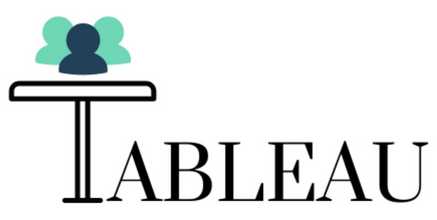Understanding Pansexuality
Pansexuality, often misunderstood and misrepresented, is a sexual orientation characterized by attraction to people regardless of their gender identity or expression. It’s a facet of human diversity that deserves understanding and acceptance as an integral part of the LGBTQ+ spectrum.
Definition and Key Characteristics
Understanding pansexuality begins with recognizing its core definition: attraction to people regardless of their gender identity or expression. This means pansexual individuals can be attracted to men, women, transgender people, non-binary individuals, and anyone else, regardless of how they identify or present themselves.
Key characteristics of pansexuality include a lack of preference for any particular gender when it comes to romantic or sexual attraction. Pansexual individuals don’t see gender as a barrier to forming meaningful connections. It’s important to note that pansexuality is distinct from bisexuality, which typically refers to attraction to two genders.
Distinguishing from Other Sexual Orientations
While both pansexuality and bisexuality encompass attraction to more than one gender, there’s a key distinction. Pansexuality extends its definition beyond simply two genders, encompassing all gender identities. Bisexual individuals may be attracted to men and women, but not necessarily to those who identify outside the male/female binary.
Another important point of clarification is that pansexuality isn’t synonymous with being “open-minded” or promiscuous. It’s a deeply personal orientation rooted in attraction, just like any other sexual identity.
The Importance of Inclusion in the LGBTQ+ Spectrum
Understanding and embracing the diversity within the LGBTQ+ spectrum is essential for fostering a more inclusive and equitable society. Pansexuality, a sexual orientation characterized by attraction to people regardless of their gender identity or expression, plays a vital role in this tapestry of human experience.
Representation and Visibility
The inclusion of pansexuality within the LGBTQ+ spectrum is crucial for creating a society that truly embraces diversity and celebrates all forms of love and connection.
Representation matters deeply. When individuals from marginalized communities see themselves reflected in media, literature, and everyday life, it fosters a sense of belonging and validation. For pansexual people, visibility serves as a powerful tool to combat stigma and misinformation surrounding their identity.
Visibility also helps educate others about the nuances of sexual orientation. By shedding light on pansexuality, we challenge narrow definitions of attraction and promote a more inclusive understanding of love and relationships.

Furthermore, inclusion empowers pansexual individuals to live authentically and openly. When society acknowledges and accepts their identities, it creates a space where they can thrive without fear of judgment or discrimination.
Challenging Gender Norms
Understanding pansexuality begins with recognizing its core definition: attraction to people regardless of their gender identity or expression. This means pansexual individuals can be attracted to men, women, transgender people, non-binary individuals, and anyone else, regardless of how they identify or present themselves.
Key characteristics of pansexuality include a lack of preference for any particular gender when it comes to romantic or sexual attraction. Pansexual individuals don’t see gender as a barrier to forming meaningful connections. It’s important to note that pansexuality is distinct from bisexuality, which typically refers to attraction to two genders.
- While both pansexuality and bisexuality encompass attraction to more than one gender, there’s a key distinction. Pansexuality extends its definition beyond simply two genders, encompassing all gender identities. Bisexual individuals may be attracted to men and women, but not necessarily to those who identify outside the male/female binary.
Another important point of clarification is that pansexuality isn’t synonymous with being “open-minded” or promiscuous. It’s a deeply personal orientation rooted in attraction, just like any other sexual identity.
Understanding and embracing the diversity within the LGBTQ+ spectrum is essential for fostering a more inclusive and equitable society. Pansexuality, a sexual orientation characterized by attraction to people regardless of their gender identity or expression, plays a vital role in this tapestry of human experience.
The inclusion of pansexuality within the LGBTQ+ spectrum is crucial for creating a society that truly embraces diversity and celebrates all forms of love and connection.
Representation matters deeply. When individuals from marginalized communities see themselves reflected in media, literature, and everyday life, it fosters a sense of belonging and validation. For pansexual people, visibility serves as a powerful tool to combat stigma and misinformation surrounding their identity.
Visibility also helps educate others about the nuances of sexual orientation. By shedding light on pansexuality, we challenge narrow definitions of attraction and promote a more inclusive understanding of love and relationships.
Furthermore, inclusion empowers pansexual individuals to live authentically and openly. When society acknowledges and accepts their identities, it creates a space where they can thrive without fear of judgment or discrimination.
Social and Cultural Impact
Understanding the diverse tapestry of human sexuality is crucial for building a more inclusive and equitable society. Pansexuality, often misunderstood, plays a vital role in this understanding. It’s a sexual orientation characterized by attraction to people regardless of their gender identity or expression, encompassing all genders and challenging traditional notions of love and relationships.
Breaking Down Stigma and Misconceptions
Understanding pansexuality is crucial for dismantling the stigma and misconceptions that often surround it. A lack of awareness and understanding can lead to harmful stereotypes and prejudice, making it difficult for pansexual individuals to live openly and authentically.
One common misconception is that pansexuality equates to being “open-minded” or promiscuous. This is a dangerous oversimplification that reduces a complex identity to a stereotype. Pansexuality is a deeply personal orientation based on attraction, just like any other sexual identity.
Another misconception is that pansexuality is the same as bisexuality. While both orientations involve attraction to more than one gender, there’s a key distinction. Pansexuality encompasses all genders, while bisexuality typically refers to attraction to two genders. This difference highlights the importance of using accurate language and recognizing the nuances within the LGBTQ+ spectrum.
Breaking down these stereotypes requires education and open dialogue. It also involves amplifying the voices of pansexual individuals and creating spaces where they feel safe to share their experiences. Visibility is crucial for combating stigma and promoting understanding.
When pansexual people are represented in media, literature, and everyday life, it normalizes their existence and challenges societal norms. This visibility can empower others to come to terms with their own identities and fosters a more inclusive society that celebrates diversity in all its forms.
Promoting Equality and Understanding
Understanding pansexuality is crucial for dismantling the stigma and misconceptions that often surround it. A lack of awareness and understanding can lead to harmful stereotypes and prejudice, making it difficult for pansexual individuals to live openly and authentically.
One common misconception is that pansexuality equates to being “open-minded” or promiscuous. This is a dangerous oversimplification that reduces a complex identity to a stereotype. Pansexuality is a deeply personal orientation based on attraction, just like any other sexual identity.
Another misconception is that pansexuality is the same as bisexuality. While both orientations involve attraction to more than one gender, there’s a key distinction. Pansexuality encompasses all genders, while bisexuality typically refers to attraction to two genders. This difference highlights the importance of using accurate language and recognizing the nuances within the LGBTQ+ spectrum.

Breaking down these stereotypes requires education and open dialogue. It also involves amplifying the voices of pansexual individuals and creating spaces where they feel safe to share their experiences. Visibility is crucial for combating stigma and promoting understanding.

When pansexual people are represented in media, literature, and everyday life, it normalizes their existence and challenges societal norms. This visibility can empower others to come to terms with their own identities and fosters a more inclusive society that celebrates diversity in all its forms.
splitting bamboo sex position
See the post for all insights
Check the full story behind it
- How Long Does A Pain Free Lip Filler Procedure Take In The UK - August 13, 2025
- How Long Do Dermal Fillers Last And Are They Worth It - August 10, 2025
- How Lip Flip Treatment Works To Smooth And Lift The Upper Lip - August 7, 2025
